Mercedes-Benz Sprinter
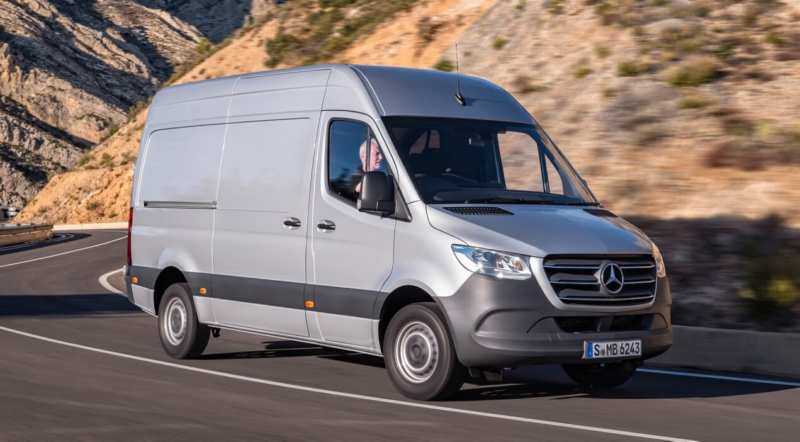
Mercedes Sprinter from the German company “Daimler-Benz” is a machine of a subdivision of light-duty trucks. The model is actively used in the commercial field as a business assistant. The truck has received various modifications, including a passenger minibus, cargo van, refrigerator and special vehicles. The whole model range is Mercedes-Benz.
In addition, on the platform of the last family, the company presented luxurious offices and luxury apartments on wheels, which are equipped with the latest technology. The appearance together with the technical component of Mercedes-Benz Sprinter is constantly improving, which makes this car very popular in many countries. The car is equipped with four body options, three wheelbase options and three roof heights, has twin or single wheels on the rear axle. Carrying capacity is up to 3,050 kg.
Both in European countries and on the territory of Russia the practice of MB Sprinter re-equipment and reworking on the side has spread massively. Totally 2 generations of Mercedes Sprinter were produced. Many people, despite the new Mercedes Sprinter 515 and so on, prefer to use the good old Mercedes Benz Sprinter Classic.
Car history
First generation
Sprinter was introduced in 1995. It was a light-duty truck with a GVW of 2,600 to 4,600 kilograms. It was designed for multi-disciplinary use in various fields – from comfortable passenger transportation to transportation of building materials in enterprises and homestead households. In the list of similar Mercedes Benz Sprinter vehicles is distinguished by its multifunctionality and economy. In a role of a platform for construction of the Sprinter the base of low-tonnage machine T1 which was rather popular since the beginning of 1980th years acted.
The car managed not only to save the high bar of the past car, but even to become more successful. The debut generation was produced in 9 standard configurations, where there were diesel engines, gasoline engines and gas equipment. Development of the car began in far 1992. Testing of pre-production models was carried out for three years at the testing grounds of three countries – Germany, France and Spain.
The company has put all its energy and experience in the production of Sprinter to the production of small commercial vehicles. The first generation of the small truck was equipped with powertrain from 80 to 160 “horses”, and payload was from 750 kg to 3 500 kg on the 6th series. The Germans made a significant step forward – they left the dependent suspension scheme, improved handling and reduced the turning radius by 15 percent.
The spring suspension was overhauled, the front cross-spring and longitudinal springs with variable thickness at the rear were used. All this allowed to increase the service life of the suspension by one and a half times. Thanks to the bold experiment of introducing a carbon fiber spring into the front suspension, it was possible to fully replace the metal elements in the design of the Sprinter 2nd generation.
During the development of the steering mechanism, the engineering staff decided to completely abandon the steering gearbox. Instead, it was replaced by a rail and a mandatory hydraulic power steering. Thanks to the fixing through silent blocks to the beam, it was possible to reduce noise and increase the already long life of the vehicle. As for the gearbox, rubber-metal clutches were no longer used.
We decided to use a two-mass flywheel with integrated damper. Long wheelbase trucks received a design with a pair of suspension bearings. After that, the PTO shaft travelled an average of 500,000 kilometers. The front suspension was created from scratch, because instead of kingpins shock-absorbing columns with ball bearings were installed, and the upper part had rubber-metal ball bearings. The rear suspension was made the same as on the T1, only it was upgraded.
Many of the elements have been tested by time and have proved to be successful, so they have been transferred to the new product, at least to a minimum. The changes also affected the outer bearings of the axle halves on single wheel axles – from single-row ball bearings to double-row tapered bearings.
Due to the fact that the vehicle was planned to be used in various operating conditions, initially the set of technical equipment had a lockable differential of the rear axle, which was equipped with the option to switch on automatically.
A little later, the models with all-wheel drive system were seen. These were machines that had a front axle and models that were equipped with a permanent four-wheel drive system with a reduction gear in the “dispenser”.
The first generation managed to take away the award “Van of the Year”, which was awarded to him in the first year of production.
Such a successful start was followed by an equally successful continuation, as evidenced by the number of produced copies (about 500,000 units), which exceeded the total number of copies produced by T1 almost twice. Initially, the car was sold only in European countries. Different models of the Sprinter were equipped with three turbocharged engines with a capacity of 2.3 and 2.9 liters, which operated on diesel fuel. In addition, there was a gasoline version of the 2.3-liter engine. All power units are synchronized with 5-speed gearboxes – automatic and manual.
In 2000, the car underwent modernization. In particular, the previous diesel engines were removed from production and replaced by more environmentally friendly and economical 2.1-liter and 2.7-liter engines. The gasoline version was upgraded along with the transmission. Now the engine had the function of direct injection of Common Rail. More cars of this production received a single index CDI. In addition, experts have implemented an electronic system of motion stabilization in the equipment of their own vehicles.
The following year, 2001, the car went on sale in North America and Japan. In the United States of America, a minibus/van was produced under the name Freightliner Sprinter, and in Japan – Mercedes-Benz Transporter T1N. Two years later (in 2003) the German company decided to conclude a contract with the American company Dodge on the joint production of this car, which since then has been sold on the North American market under the name of Dodge Sprinter.
A total of 1,300,000 Sprinter vehicles have been sold in 11 years of first generation production. Also in 2003, Mercedes-Benz Sprinter has undergone another improvement, which mostly concerned the appearance of the model. In addition, as a result of the introduction of fresh high-tech powertrains and high quality electronics, the minibus became more dynamic and “smarter”, acquiring real intelligence from engineers.
Second generation
The second family of famous cars was presented in Europe in 2006. Fans saw the car in six body solutions – a minibus, van, flatbed versions with two and four doors. In addition, the distinguishing feature of the second family was the choice of three types of wheelbases. The model with the shortest platform received 3,000 millimeters, at 5,070 millimeters in length and 1,933 millimeters in width. The turning radius was 11.2 metres. The longest wheelbase of the Sprinter is 4,025 millimetres and the average is 3,550 millimetres.
Changes have also affected the exterior of the body. For example, chrome-plated steel radiator grilles, massive bumpers, neatly shaped headlamps, “muscular type” wheel arches, large air intakes, which made the car look more brutal and solid. As mentioned earlier, the van also received a directional stability system, hydraulic power steering and power windows. For many motorists it is a well-known Mercedes Sprinter Classic.
The strongest engine was a 3.5 liter gasoline engine, which produced 285 horsepower. It is synchronized with the automatic 5-speed gearbox, and also has a drive on the rear wheels. In urban areas, such a powerful engine requires about 17.3 liters per 100 kilometers, and when driving on the road the consumption is reduced to 10.3 liters per hundred.
But the most “representative” engine of the diesel lineup is a three-liter 190 hp engine, which also has a rear-wheel drive system, but works in conjunction with a 6-speed manual gearbox.
Restyling 2013
Exterior
In the autumn (September) of 2013, the German company made a restyling for one of the most popular passenger and cargo vehicles, which this time affected the appearance of the car and its security system. Among the most notable innovations is the updated design of the bow body, which includes a new grille and headlights, the style of which resembles the car of a German company. In addition, the vehicle received a unique hood and upgraded front lighting system.
Side wind resistance has been improved by changing the ground clearance by 3 centimetres. To make the visual perception of the car special, a design team led by Laurent Boulevard joined in, doing everything possible to give Mercedes atypical features for this class.
The body shape has changed, becoming more streamlined than its predecessor. In addition, the model has a large U-shaped radiator grille, where there are two wide chrome “ribs” separating it horizontally. Larger than the headlights, they have a diamond-shaped appearance with rounded corners.
The hood is now more embossed, convex, and there are two ventilation holes at the top of the hood. The front bumper has been redesigned to have a wide air inlet in the middle in the form of an inverted trapeze and drop-shaped holes on the sides in which foggles are installed. The design of the side and rear doors also underwent a change – they increased in size and received streamlined shapes. The glazing area has been increased due to the increased side and U-shaped windows on the rear doors.
The side part of the body is equipped with a fashionable for today’s fashionable stamping, which expands smoothly from the side doors in front, passes the back of the body and stops at the doors installed at the back. Restyling has brought wide plastic protective elements in the form of a dodger all over the body perimeter. The appearance of the rear lights has been improved and now they have increased, but remained in a vertical position.
Interior
The interior of the upgraded car was also significantly changed. The driver’s workplace now looks completely different. The new dashboard was installed under a large hemispherical visor. The “device” has a massive tachometer and speedometer, between which a tidy small “window” of the board computer is located.
The rudder has an average size and four spokes. A massive rectangular console was installed on the central part of the truck, in which a gearshift lever was installed on the driver’s side. Seats are adjusted longitudinally and in height. Top-of-the-range equipment has a lumbar support adjustment function.
The upper part of the console has a compartment for various trifles, and below it there is a block of multimedia system with a wide screen. The bottom of the console is designed for the climate control unit and service buttons. The right upper part of the torpedo is occupied by a deep niche, where you can fold various papers. Below it there is a spacious glove compartment. The engineering team has improved the design of the driver’s and passenger seats.
All seats have active head restraints and seat belts. Passengers can enter the interior by means of a side or middle sliding door. The luggage compartment has a modest volume – 140 liters with a nine-seat interior layout. The interior space of the car is much better. The interior is now more elegant and stylish thanks to the abundance of chrome elements, and the seats have excellent, practical upholstery of high quality.
The steering column has “puffy” shapes that many drivers like. Therefore, the ergonomic component of the steering column has grown considerably. It is necessary to notice more modern audio and navigation systems.
Specifications
Powertrain
Speaking of technical equipment, and more specifically, engines, they remained the same. Although the engines remained the same, they have undergone minor improvements that allowed the machines to meet the stringent environmental standards of Euro-6. There are a couple of 2.1-liter turbocharged diesel engines, producing 109 and 150 horsepower.
The gasoline version also received two versions – 56 and 258 “horses”. A large percentage of toxic gases are neutralized by injection into the urea catalyst. This innovation was named BlueEFFICIENCY and gave the car a chance to be a contender for the title of the first car that fully meets the environmental standards of the “new time”.
Consumption of the power unit in the standard configuration is as follows: in the city 15.8 – 16.3 liters per 100 km, on the highway 10.7-11.2 liters per 100 km, and the combined consumption is 13.3-13.8 liters for every 100 km.
Transmission
Diesel engines are synchronized with the EcoGear 6-speed manual transmission, while gasoline engines come with a 6-speed automatic gearbox. After a while, the 7-speed automatic transmission 7g-Tronic Plus was installed. Drive of the car is rear/full.
Under restyling were passenger modifications of the car and vans, and this eloquently indicates that the majority of Mercedes-Benz Sprinter cars will continue to be in demand and popular with customers in many countries around the world.
It is not superfluous to remind that the updated Sprinter 2013 will be produced at the Gorky Automobile Plant. Hence, the reduction of their price by 20% of the value of the products manufactured in Europe.
Safety
The German company paid maximum attention to safety in its upgraded version of the Mercedes-Benz Sprinter. The engineering staff tried and equipped the model with a large number of appropriate systems, electronic assistants.
For example, the function Crosswind Assist, which allows you to provide additional protection against side wind by turning on the brakes automatically. Also available as a separate option are Highbeam Assist (high beam adaptation), Collison Prevention Assist (collision avoidance) and Blind Spot Assist (rearrangement assistant).
The Sprinter is now equipped with another safety feature that automatically activates the vehicle’s stop lamps in flicker mode when braking at 50 km/h during emergency braking. If emergency braking occurs at a speed of 70 km/h, the system automatically triggers an alarm. As mentioned above, much emphasis has been placed on active safety, as working at full load and in extreme conditions requires maximum efficiency. Front and side airbags are provided.
This light-tonnage vehicle has a whole complex of systems responsible for ensuring a proper level of safety of life and health of passengers. All wheels are equipped with disc brakes, which work perfectly even during sharp braking at maximum load.
The equipment includes ABS/ABD. As a separate option, an ASR anti-skid system is installed together with ABS, which prevents slippage of the wheels and guarantees a secure grip on wet and slippery road surfaces.
For use in difficult conditions, there are versions that switch off the four-wheel drive system. The Duo-Servo hydraulic rear-wheel parking brake, which operates independently of the service brake, has not been forgotten.
This novelty is characterized by good deformation characteristics – thanks to the reinforced design of the nose frame, it takes on most of the impact force during a frontal collision. To better protect the vehicle, Mercedes-Benz Sprinter can be fitted with driver and passenger airbags and three-point seat belts on all seats.
Crash test
The new model has passed the frontal crash-tests of three varieties. The first one is mandatory, according to ECE R12 standards. It is necessary to accelerate the car to a speed of 48.3 kilometers per hour and hit a hard barrier. In addition, the Germans checked their minibus according to ECe R94 standards – at a speed of 56 km/h there is a collision with a deformable barrier with a 40% overlap. Also, the company carried out a simulation of the accident in the city limits – the speed of 15 km/h, a rigid barrier without overlapping.
According to the developers, the passive safety of the vehicle was improved. The steering column of Sprinter during the impact is folded in three areas at once. Airbags are fired not only from the front, but also from the side panels (where they can be built in on request). The front suspension subframe is able to be “knocked out” from specially designed fasteners and bend. The front ends of the spars begin to shrink with an accordion, which absorbs the collision force.
Interestingly, Mercedes specialists have specially developed elements of interchangeable type of spars, which are mounted and welded instead of flattened. According to the crash-test, it became clear that they behave no worse than the default ones during the impact.
Complete sets and prices
If you take the average cost of a German car in the back of the van, the model assembled in the Russian Federation, will cost from $ 18345 for standard equipment. The price of the “top” version of “Corporate Bus” will start with $24931. Passenger modifications are estimated from $22736.
The domestic car market has such modifications of the car:
- A van with a wheelbase of 3,550 or 4,025 mm costs from $19,129,129;
- Route taxi models for 17+1 seats in the stock configuration – from $22861, in the version “Advanced” – $23253;
- Route taxi version for 20+1 seats costs from $24209.
In the secondary market, the 2014-2015 model will have to be paid from $20384. Copies of 2008-2009 are, of course, cheaper – from $10976.
Do not forget that buying a truck is much better than buying a passenger version. Explain it quite easily – passenger variants differ in a special way of operation – they are used as a route taxi, so they have more operating time in acceleration/braking mode. The vans are operated in a more gentle manner.
The pros and cons
Pluses cars
- Thanks to the latest restyling, the car looks more stylish and modern;
- Improved front optics;
- Pleasant stylish body lines;
- There are modifications with all-wheel drive system;
- Improved power units;
- Large selection of modifications of the car;
- Various motors and gearboxes are available to choose from;
- Different electronic systems designed to help you drive the car;
- Good security;
- Improved interior of the car;
- Good dynamic characteristics;
- Quality assembly;
- Long-term operation of many technical equipment elements;
- Moderate fuel consumption;
- In a body van it is convenient to transport various cargoes;
- Ergonomic interior;
- There is a colour display on the central console;
- Good controllability;
- Prevalence of spare parts;
- Capacity;
- Reliable suspension.
Cons of a car
- High price of spare parts
- Weak corrosion resistance;
- Fuel requirement;
- Uncomfortable to use in winter with rear-driven variants;
- Weak noise isolation.
Summing up
Mercedes-Benz Sprinter is actively used for commercial purposes and as a business assistant. Even the very first generation of vehicles was very popular with drivers in many countries. German quality has always attracted customers. The sprinter is quite mobile, versatile, and can be used for many purposes.
However, it has good dynamics and consumes less fuel. Recent upgrades have significantly improved the model, giving it a more modern look, improving the interior and increasing the level of security. Mercedes-Benz cars run for a long time, and Sprinter is no exception. If you follow all the maintenance requirements and operate the vehicle correctly, it will be able to serve you for a long time without significant damage.
We advise you to read the article: Mercedes-Benz, classic German cars


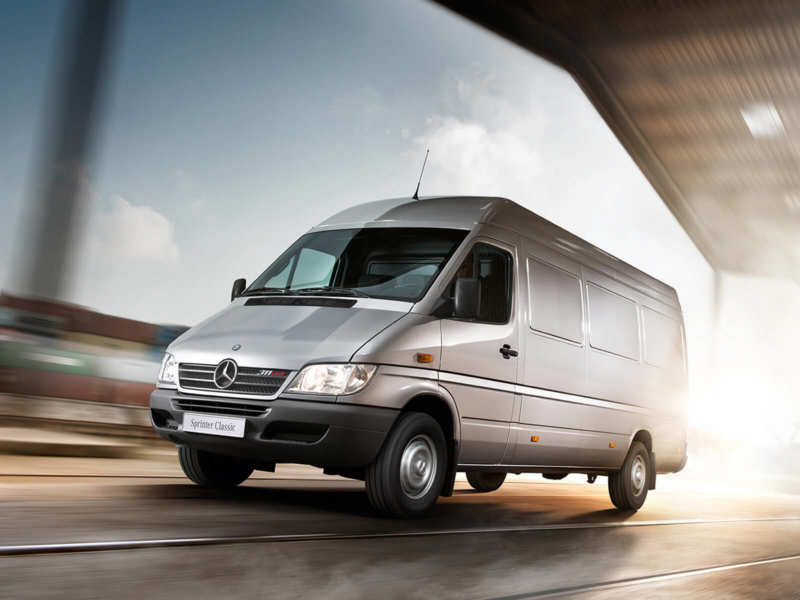
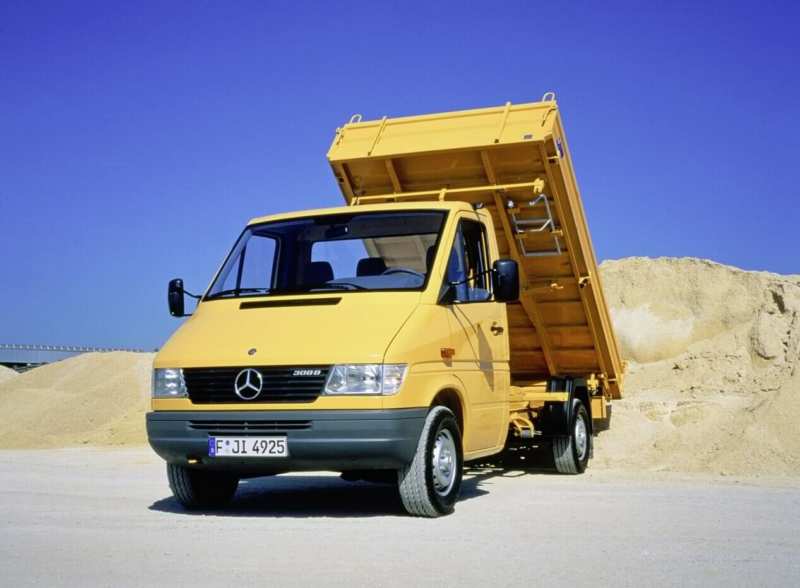
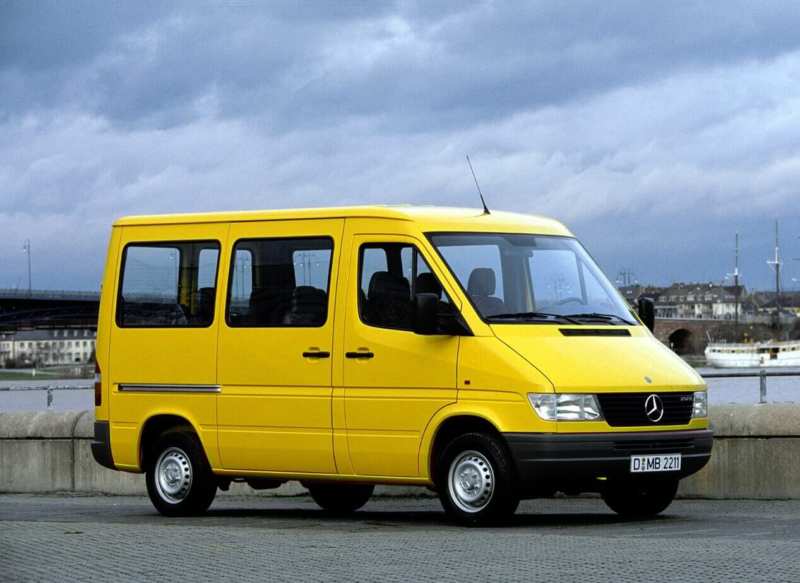
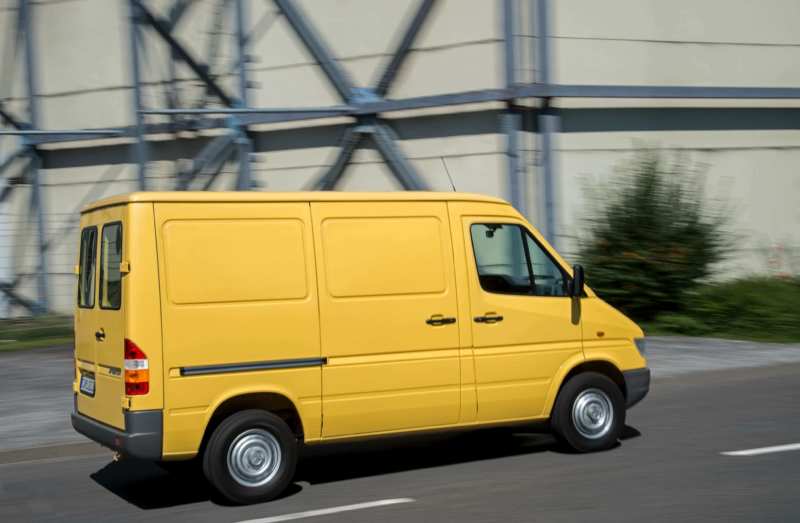
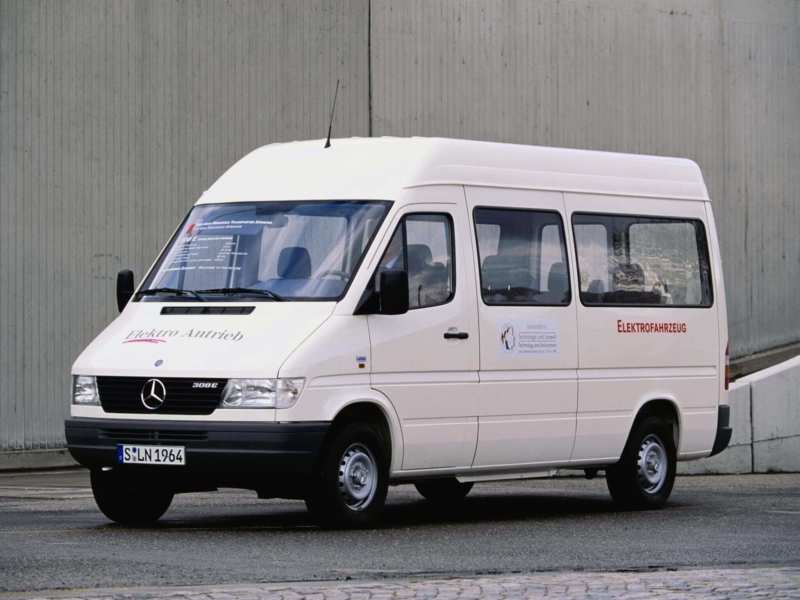
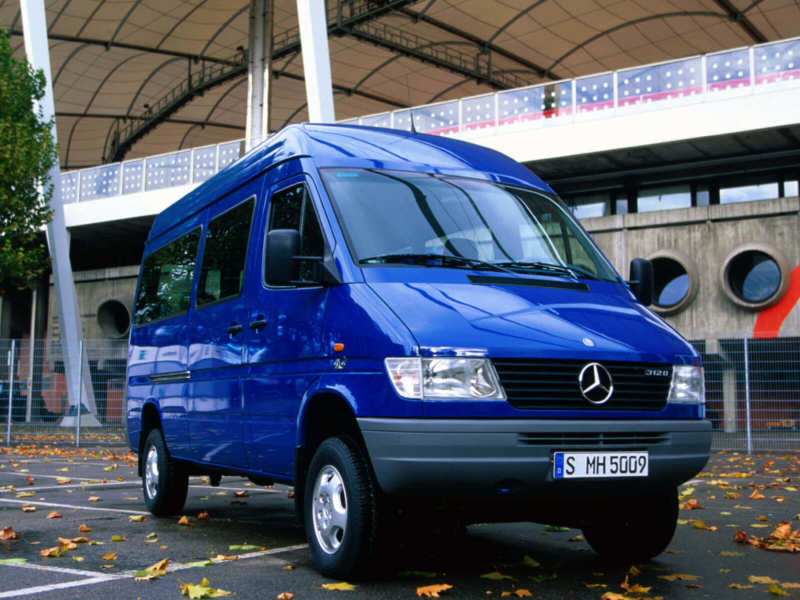
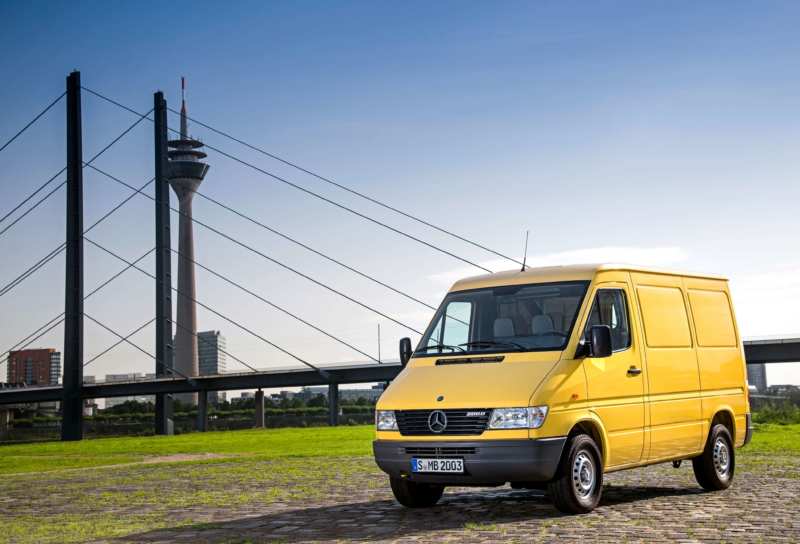
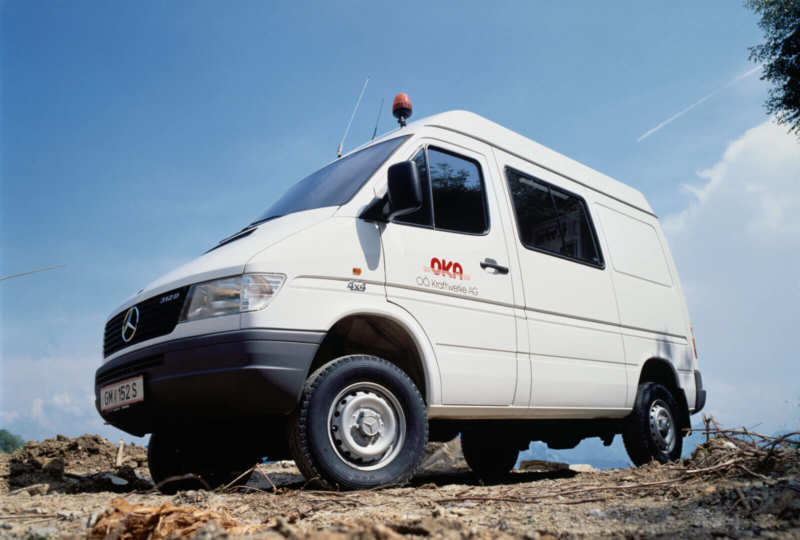
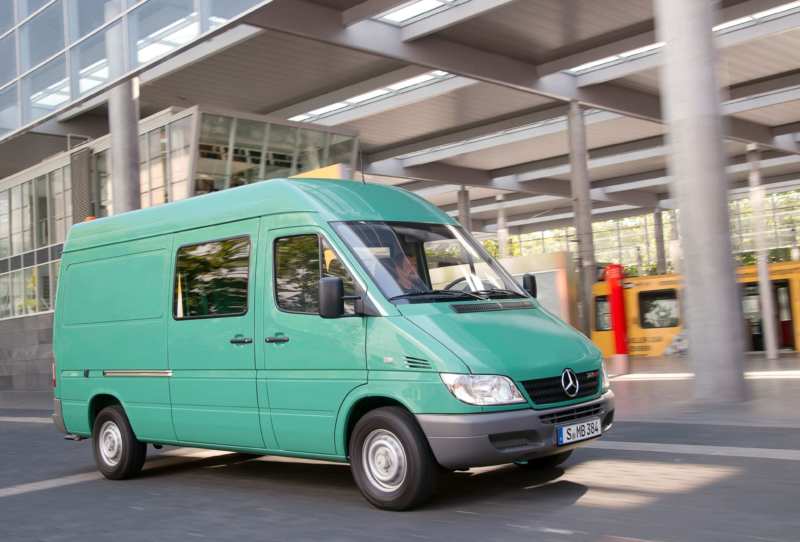
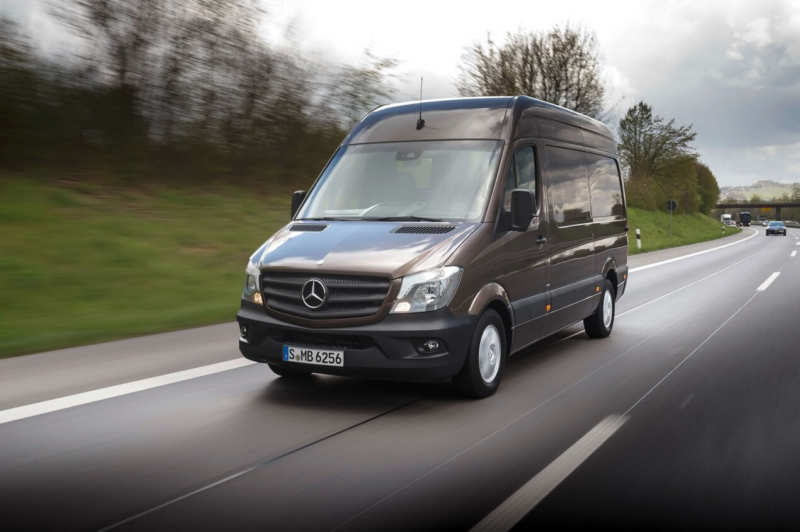
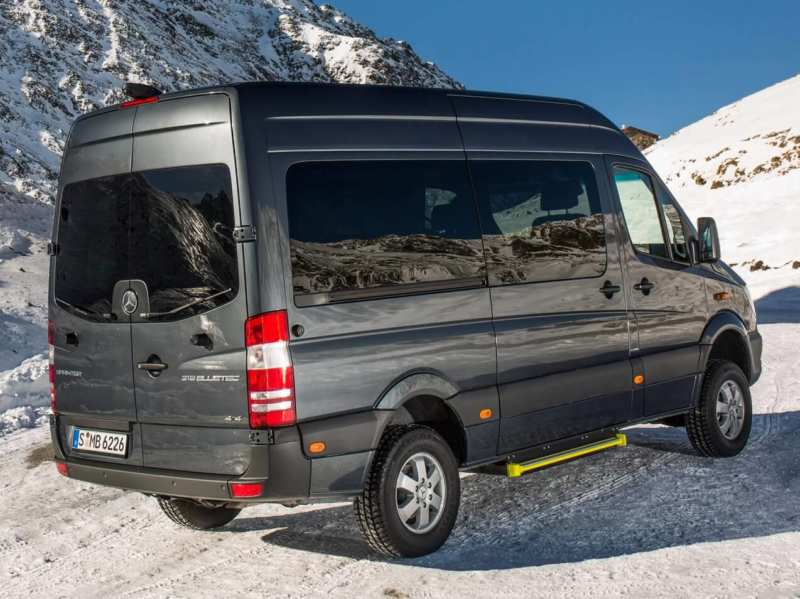
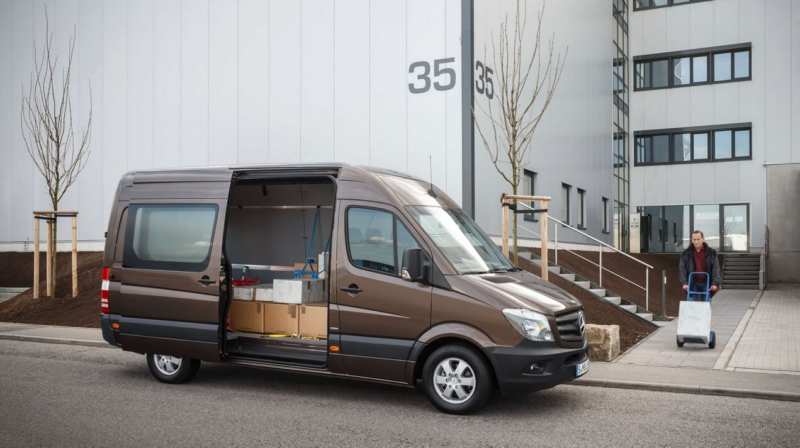
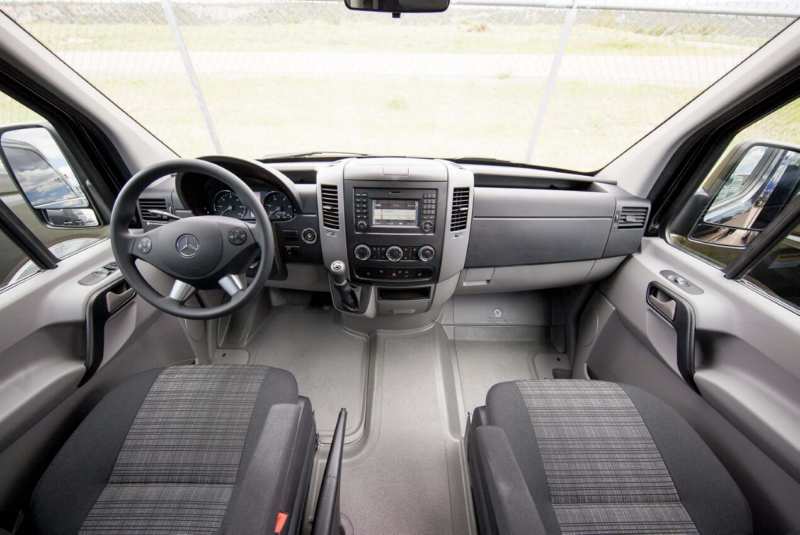
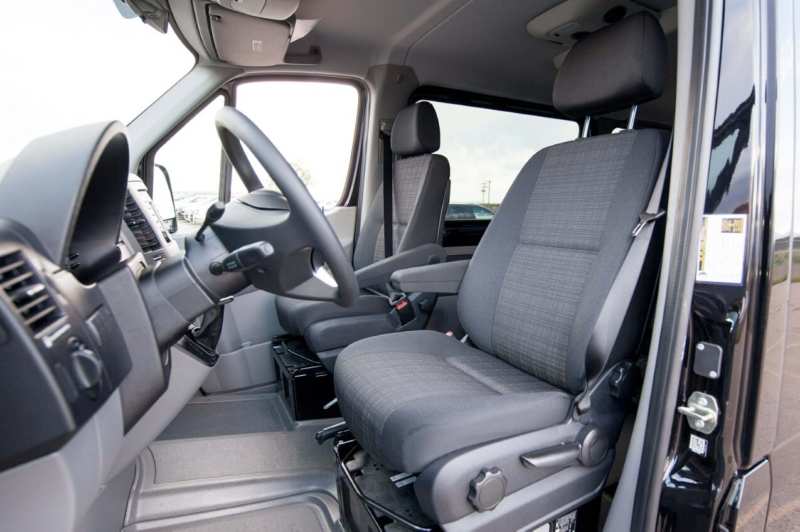
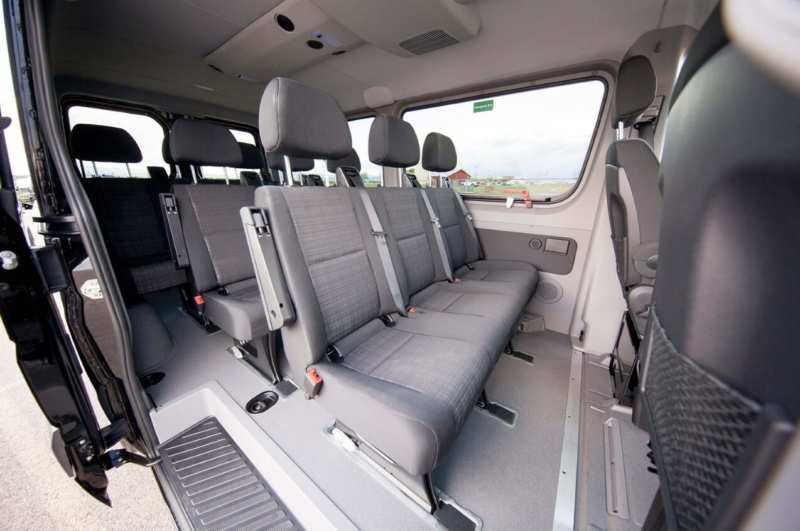
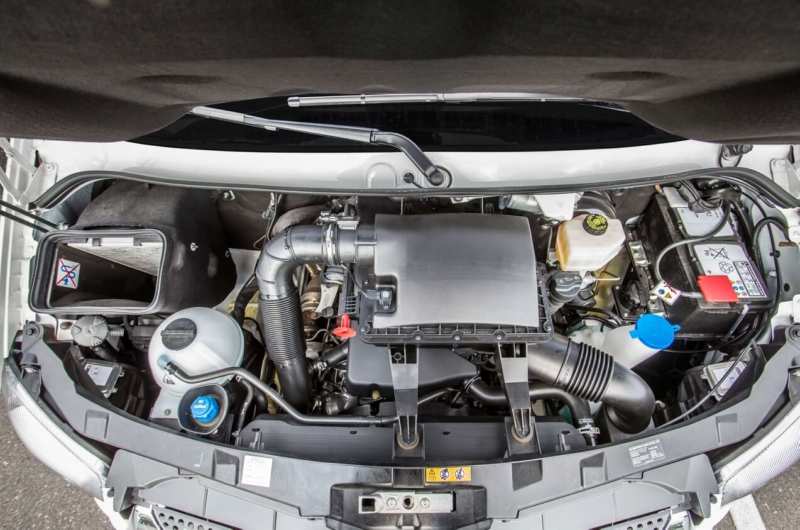

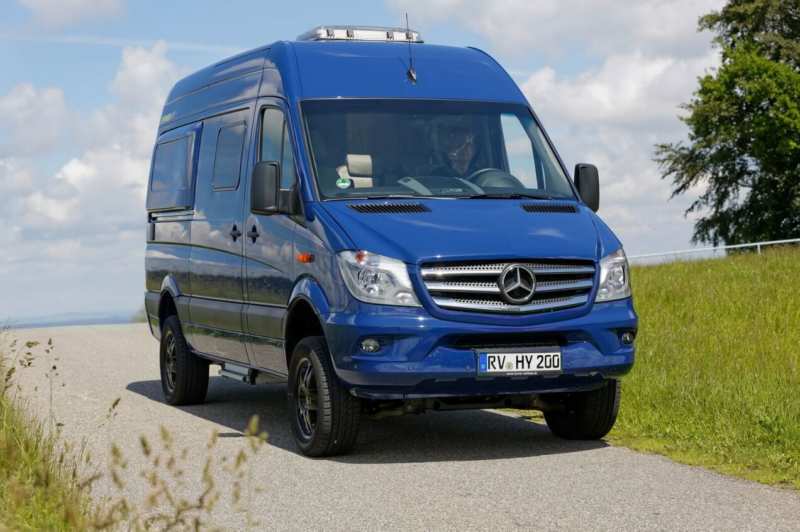
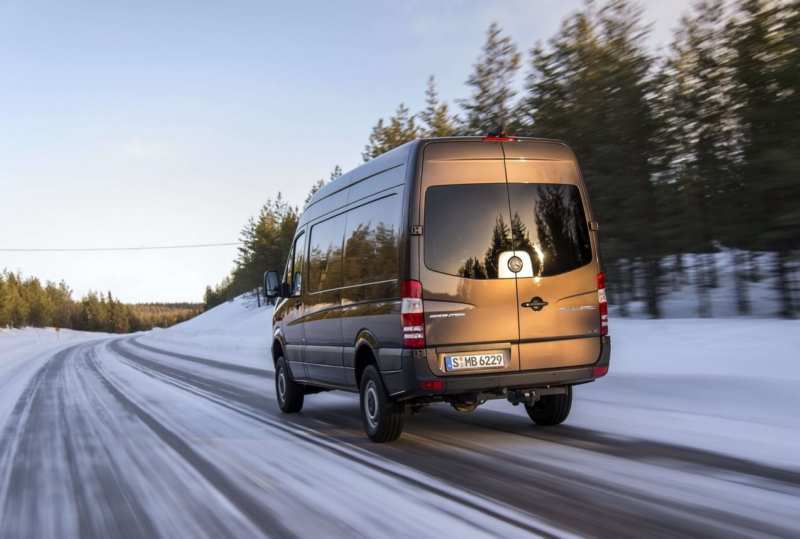
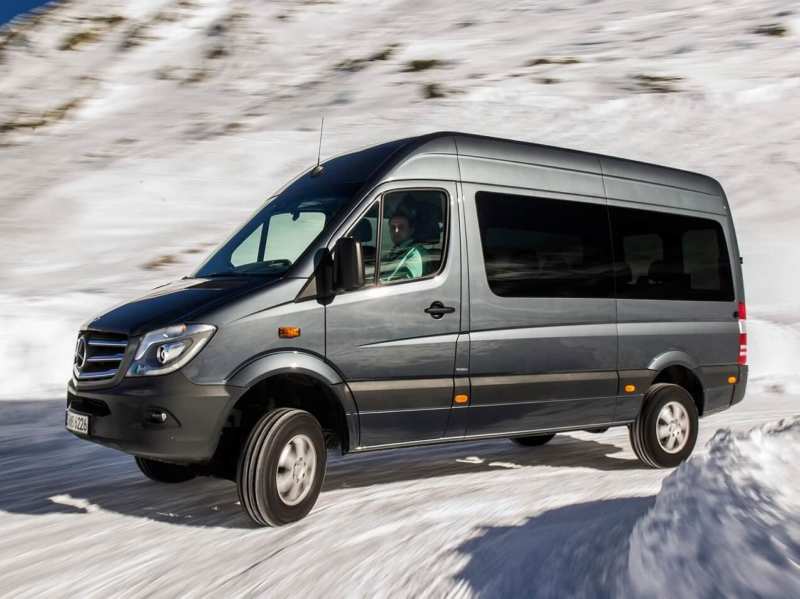
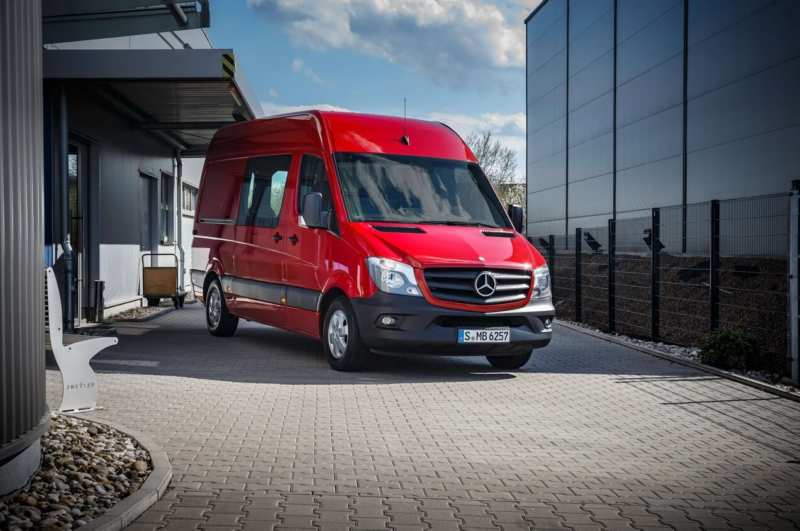
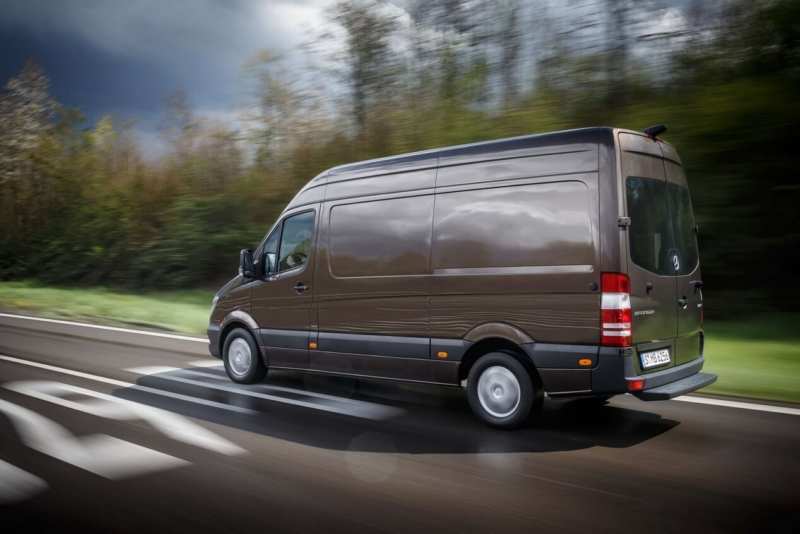
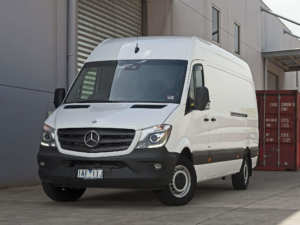
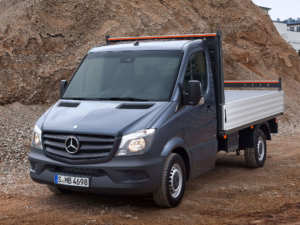
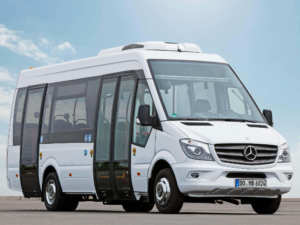
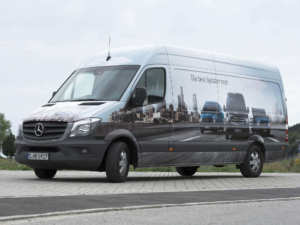
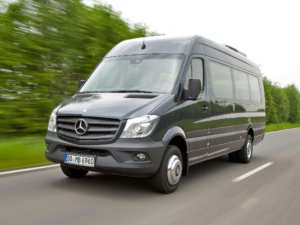
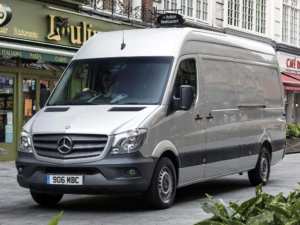
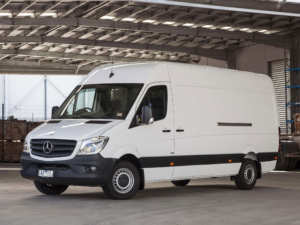
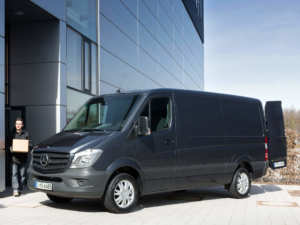
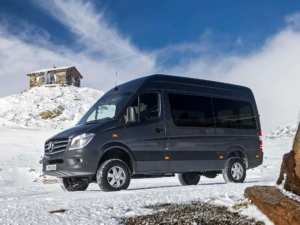
I see no point in this car, a weak suspension and poor build quality, for two years I invested in it as much as it is new, because everything breaks down and decays. Now gazelles make more reliable and comfortable, and they are much cheaper to maintain.
It’s a pity that it lasts for just a warranty period, and then you keep it at your own risk, because the statistics of breakdowns on the sprinter are generally interesting, according to statistics, most of the sprinters with procapital or even new engines generally go by 150 thousand km such repairs are not modest money.